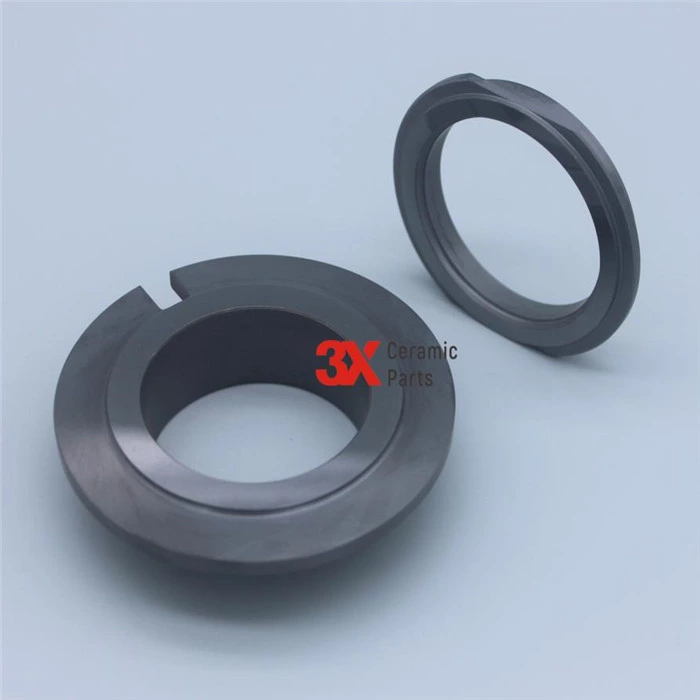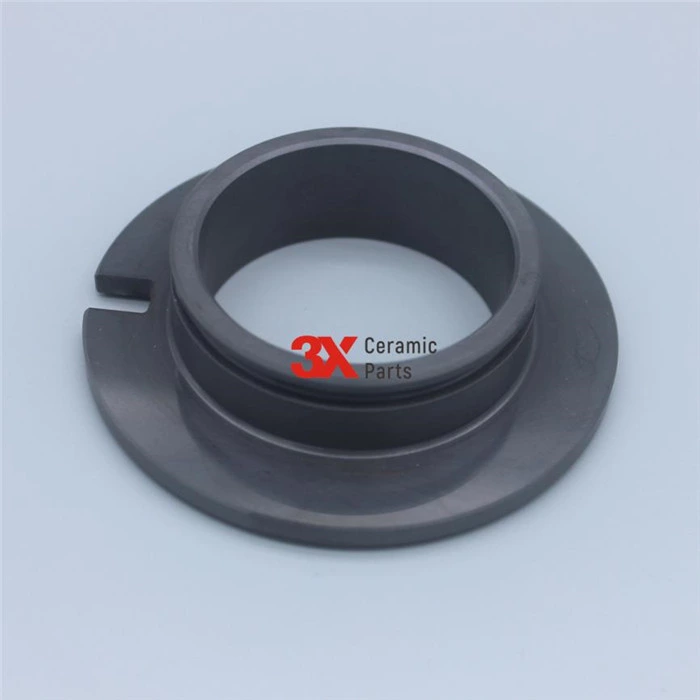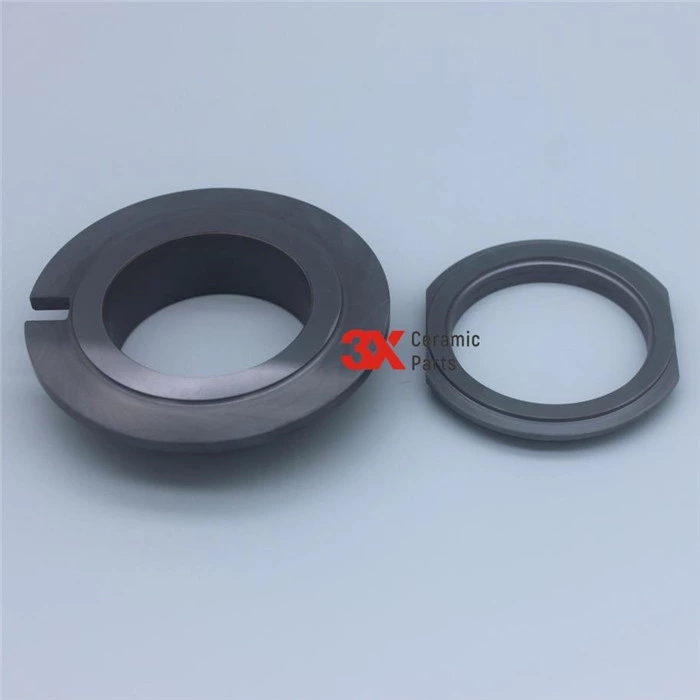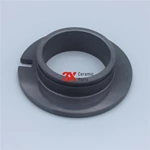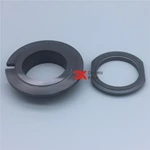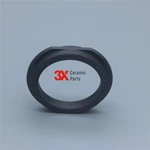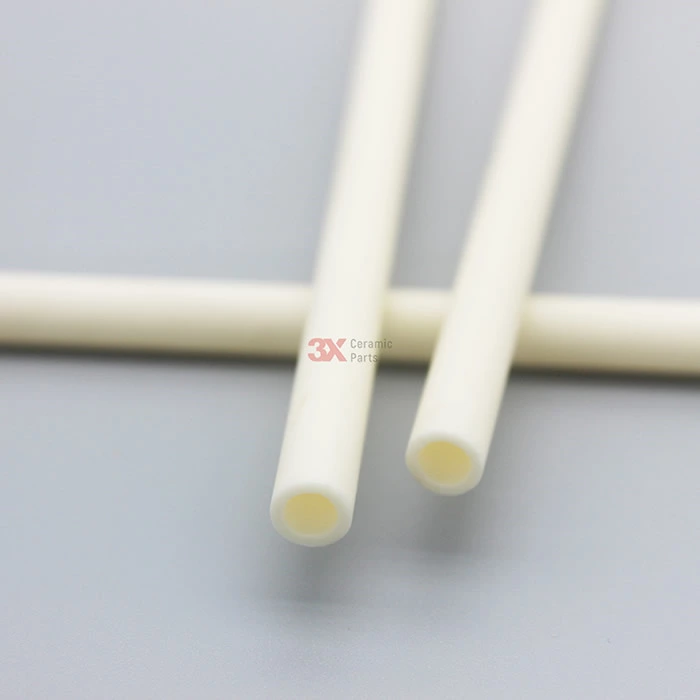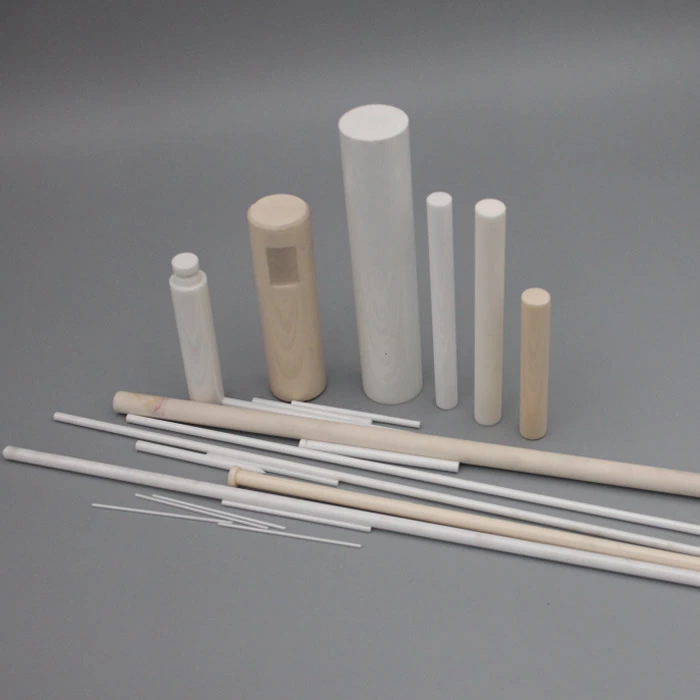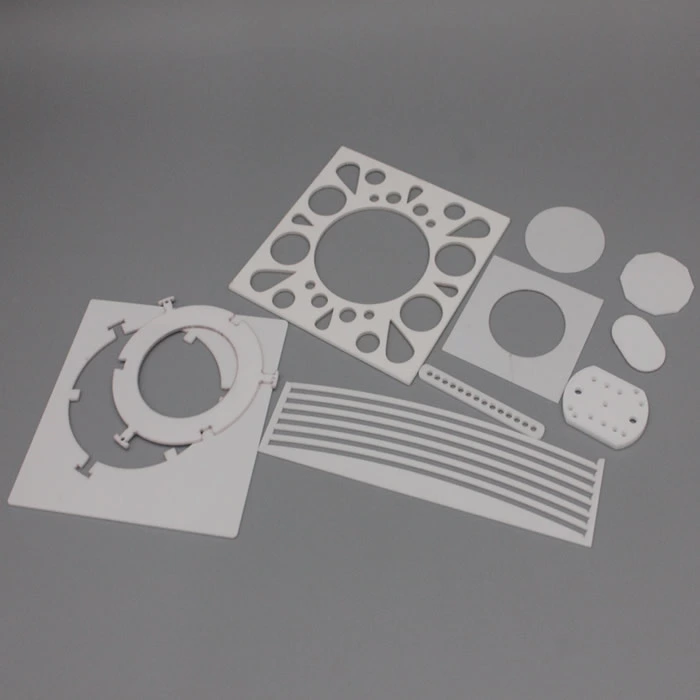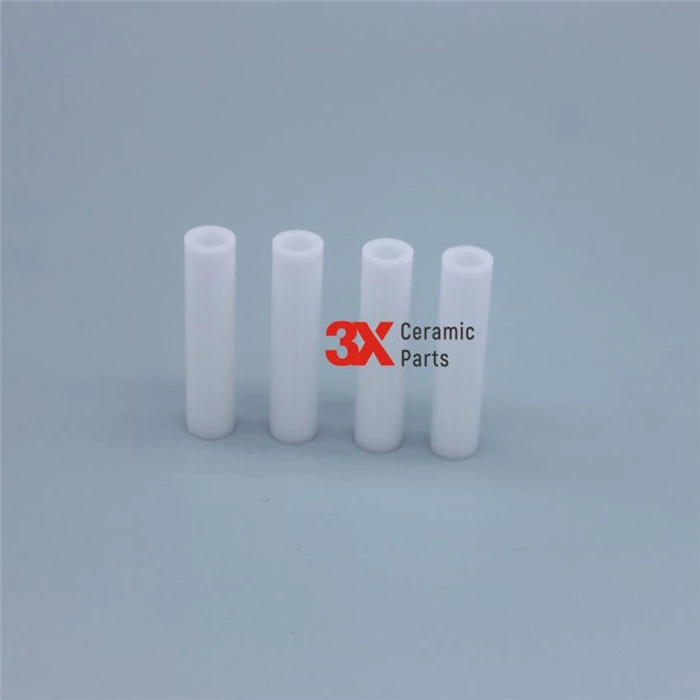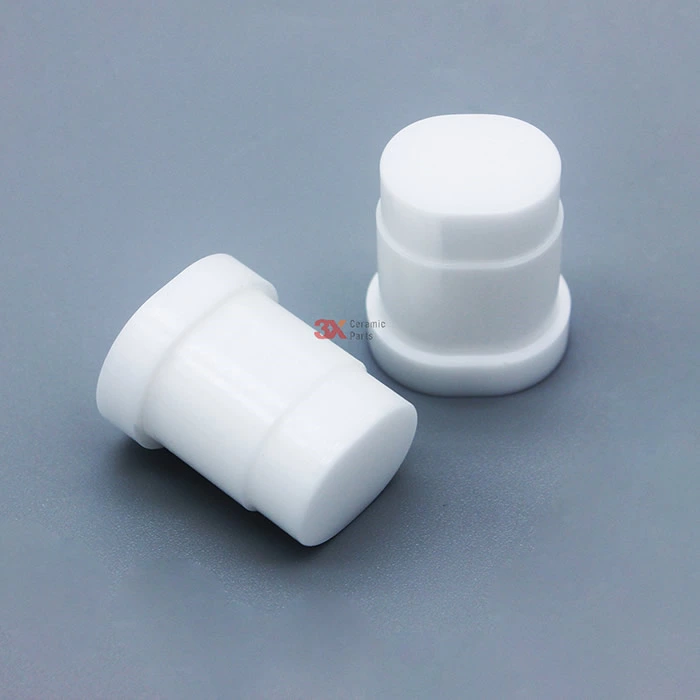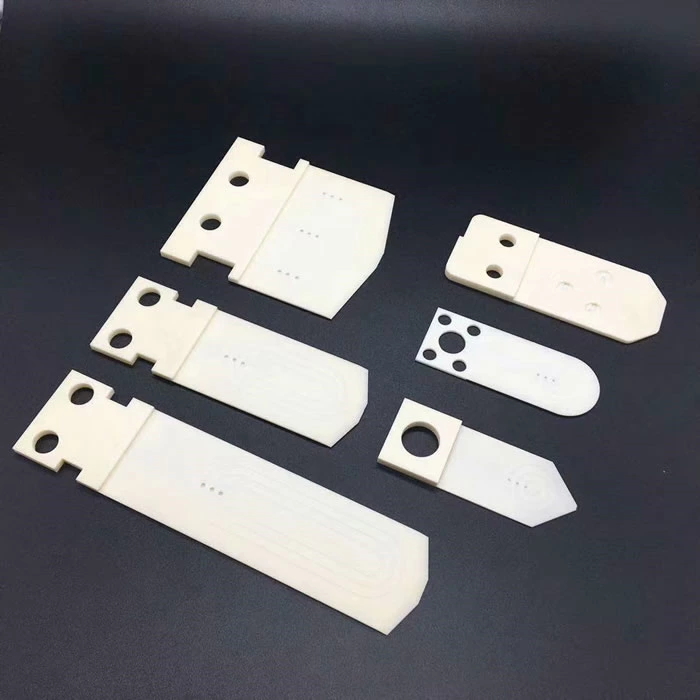RBSiC SiC Ceramic Ring Sleeve
- Brand Name
- 3X Ceramic Parts
- Material Type
- RBSiC Silicon Carbide
- Forming Way
- Reaction Bonded Silicon Carbide
- MOQ
- 5 pieces
- Specification
- custom make
- Hardness
- 91~93 HRA
- Density
- ≥3.03 g/cm3
- Ceramic To Metal Connecting Way
- 1300 ℃
- Thermal Conductivity
- 90-110 W (m.k)
- Compressive Strength
- ≥2000 Mpa
- Flexural Strength
- ≥350 Mpa
RBSiC SiC Ceramic Ring Sleeve
RBSiC Silicon Carbide material has excellent properties such as good high-temperature thermal stability, high thermal conductivity, high acid and alkali corrosion resistance, low expansion coefficient, good thermal shock resistance, low density, low friction coefficient when paired with carbon graphite and its own, and extremely high hardness. As an ideal seal material for mechanical seals, it is widely used for seals under operating conditions such as high pressure, high speed, high temperature, corrosive media and media containing solid particles. Although silicon carbide is an excellent abrasive and excellent functional material, its manufacturing cost is very high. For example, smelting silicon carbide consumes a large amount of power, with an average power consumption of 9000 kwh per ton, accounting for more than 30% of the production cost. The main problems of SiC ceramic seals are high brittleness, low toughness, hardness to be further improved, wear resistance and service life to be increased, high sintering temperature, high energy consumption and high production cost.
The reasons for the above problems of silicon carbide ceramic seals are that the formulation is unscientific and reasonable, the dosage of sintering aids and additives is improper, the particle size of the powder is large, the powder agglomeration is serious, the particle size distribution is wide, and the content of impurities is high, which makes the fluidity and molding performance of the material powder poor, and the sintering performance and mechanical performance poor. Therefore, it is necessary to select scientific and reasonable additives to prepare SiC powder, improve the sintering performance and microstructure of SiC, improve the hardness and toughness of SiC ceramic seals, and improve the comprehensive properties of SiC ceramic seals; At the same time, optimize the raw material formula, forming and sintering process, reduce the pressureless sintering temperature of silicon carbide ceramic seals, and reduce the cost. Main arguments and arguments; The project aims at the problems of high brittleness, low toughness, short wear resistance and service life, hardness to be further improved, high energy consumption, high production cost and low cost performance caused by high sintering temperature of domestic SiC seals α- SiC and β- Using SiC as the main raw material, 56 kinds of SiC ceramic samples from 8 systems were prepared by means of pressureless sintering by means of composite strengthening and fiber toughening. Their bulk density, water absorption, porosity, Rockwell hardness, bending strength and micro morphology were tested, characterized and analyzed, which improved the hardness and compressive strength of the material, reduced the sintering temperature of the material, and obtained a complete SiC material preparation technology.
Originality and innovation; a. The project can realize the mass production of complex structure products by using pressureless sintering, meet the needs of various industries for complex structure ceramic parts, simplify the production process, reduce the production cost, easy to form large-scale production and realize industrialization. b. Through the improvement of silicon carbide ceramic formula system and the adjustment of sintering additives, the sintering temperature of the material is reduced to 2120 ℃, which reduces the product energy consumption, saves the production cost and enhances the competitiveness of the product. c. At the same time, the project achieves the effect of reinforcing and toughening silicon carbide ceramic materials by two means. The extremely high hardness of B4C is used to make the internal phases play their respective roles through composition composition, resulting in synergistic toughening and reinforcing effect, which greatly improves the strength and toughness of ceramic materials. At the same time, the SiC ceramic materials are toughened through whisker bridging, crack deflection, whisker pulling out and other functions by using the high tensile strength and high elastic modulus of SiC whiskers. Social and economic benefits, existing problems; After the implementation of the project, by adopting the improved sintering assistant system and fiber toughening means, the pressureless sintering of high hardness, strength and toughness silicon carbide ceramic seals has been realized, the hardness and bending strength of the materials have been enhanced, the sintering temperature of the materials has been reduced, and the performance of the prepared ceramic products has reached the leading level in the province. This technology belongs to the innovation subject encouraged by our province, and has a good market prospect and a large market potential in the medium and long term. During the implementation of this project,
more research is focused on the mechanical properties of materials. Due to the relationship of time, the green body formula has not been tested and modified as a grouting material, and the water retention, fluidity and molding properties of the green body formula have not been tested. This aspect needs to be further studied in the future. In this project, SiC whiskers are introduced into the formulation system as a means of fiber toughening to toughen SiC ceramic materials. Silicon carbide whiskers are expensive. Although the reduction of firing temperature will reduce some production costs, it is impossible to estimate whether the reduced costs can make up for the increase in raw material costs caused by the incorporation of silicon carbide whiskers without pilot scale-up experiments. If the increase of raw material cost is too large, the production cost of silicon carbide ceramic materials will be increased, which will hinder the further promotion and transformation of the project. The doping amount of SiC whiskers may be readjusted after the pilot scale-up experiment, and a new balance between cost and mechanical properties will be found, which is also the focus and difficulty of the next research.


